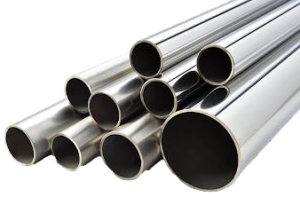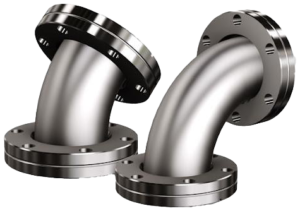Meta Description
Understand ASME B16.5 flange standards, including dimensions, pressure classes, and materials, and learn why they are critical for safe piping systems.
Introduction
When selecting flanges for industrial piping systems, compliance with ASME B16.5 standards is essential. This standard defines the dimensions, materials, pressure classes, and tolerances of pipe flanges. As a result, it ensures compatibility and safety across industries worldwide.
At DLSS, we manufacture forged stainless steel flanges strictly in accordance with ASME B16.5, providing our clients with confidence in every connection. For a closer look at our products, see our DLSS Flanges Product Page.
Scope of ASME B16.5
ASME B16.5 is one of the most widely used flange standards in the world. It covers:
- Nominal Pipe Sizes (NPS): 1/2″ to 24″
- Pressure Classes: 150, 300, 400, 600, 900, 1500, and 2500
- Flange Types: Weld Neck, Slip-On, Blind, Socket Weld, Lap Joint, and Threaded
- Materials: Carbon steel, stainless steel, alloy steel, and special alloys
- Tolerances and Marking: Strict dimensional accuracy and stamping requirements
Therefore, engineers can select flanges knowing they will match existing piping systems manufactured to the same standard.
Pressure Classes Explained
One of the most important aspects of ASME B16.5 is pressure class rating. These ratings define the maximum pressure and temperature conditions that a flange can handle.
- Class 150: Suitable for low-pressure water, gas, and HVAC systems.
- Class 300: Handles higher-pressure applications, including oil & gas.
- Class 600 and above: Designed for refineries, chemical plants, and power plants operating under extreme pressure and temperature.
In addition, the choice of material (such as stainless steel 304L, 316L, or Duplex) also affects pressure-temperature performance.
Flange Face Types in ASME B16.5
The standard defines several face configurations, each with different sealing capabilities:
- Raised Face (RF): Most common type, improves gasket sealing.
- Ring Type Joint (RTJ): Metal-to-metal seal, ideal for high-pressure, high-temperature applications.
- Flat Face (FF): Used where flange materials must match softer piping systems, such as cast iron.
As a result, engineers can select the right face type for both sealing performance and system compatibility.
Benefits of Using ASME B16.5 Flanges
Choosing flanges manufactured to ASME B16.5 brings several advantages:
- Global Compatibility: Ensures interchangeability with international suppliers.
- Safety Assurance: Designed for defined pressure-temperature ratings.
- Quality Control: Dimensions and materials are verified by third-party inspections.
- Wide Availability: The most common standard used across oil & gas, chemical, and power industries.
For additional technical details, visit the official ASME Website or consult the Wikipedia Flange Overview.
DLSS Manufacturing Capabilities
DLSS manufactures stainless steel forged flanges in strict accordance with ASME B16.5. Our capabilities include:
- Sizes: NPS 1/2″ to 24″
- Pressure Classes: 150 to 2500
- Materials: Stainless steel (304L, 316L, 317L), Duplex (S32205, S32750), and Nickel alloys
- Testing: PMI, UT, RT, hydro test, and third-party inspections (ABS, DNV, BV, LR, PED)
You can also explore our case study on F317L Forged Flanges to see how our products perform in real projects.
Conclusion
ASME B16.5 is the cornerstone standard for flanges in modern piping systems. By following this specification, manufacturers and end users ensure safety, compatibility, and long service life. DLSS delivers flanges that meet and exceed ASME B16.5 requirements, helping clients achieve reliable performance in critical industries worldwide.


